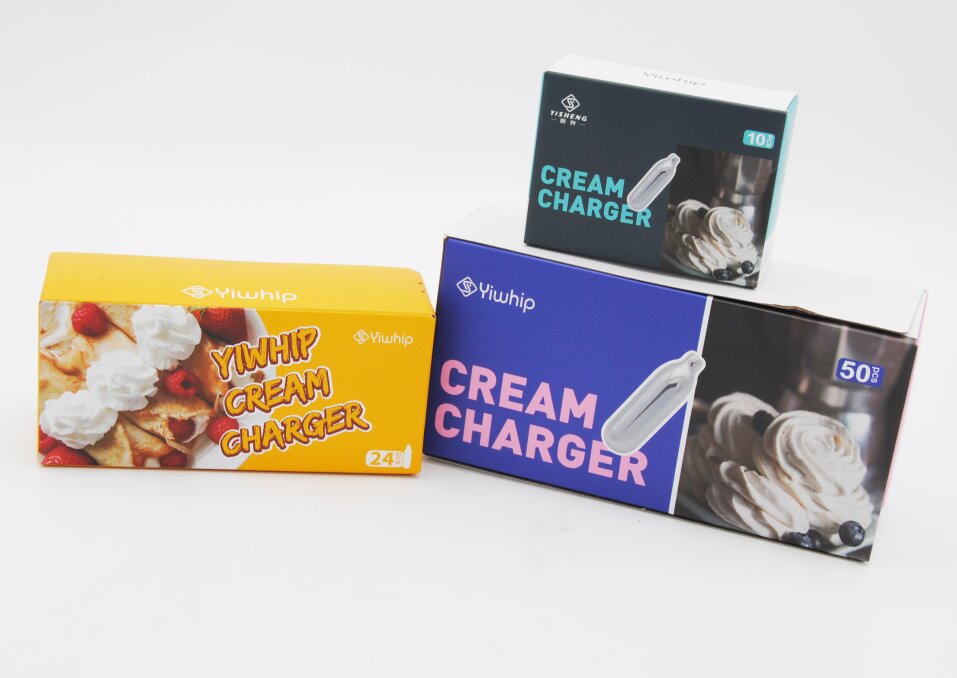Whipped Cream Chargers: The Unsung Heroes Behind Every Dollop of Fluffy Delight
In the heart of every café's back kitchen, hidden from customers yet **powering the creamy revolution**, lie those unassuming canisters known as whipped cream chargers. Though small in size and often overlooked on countertops or tucked into storage shelves, these little cylinders are **anything but ordinary**. A nitrous oxide charge is not just a kitchen tool — it’s an indispensable component driving consistency, flavor retention, and professional efficiency in today’s high-traffic culinary operations across Hong Kong.
Chefs and pastry artisans increasingly rely on **whipped cream dispensers paired with chargers**, leveraging modern tech that enhances texture without compromising integrity. Whether serving freshly piped mousses in upscale patisseries or delivering cloud-like foam for molecular gastronomy creations at Michelin-rated restaurants, the role of Nitrous Oxide canisters goes well beyond mere food preparation—they shape how we experience desserts today.
The Science Behind The Sweet Clouds: How Do Nitrous Oxide Chargers Work?
To fully grasp the importance of nitrous oxide in whipping systems, one must delve into some basic chemistry. These metal cartridges contain pure N₂O — a colorless, inert gas with mild anaesthetic qualities once used by 18th-century chemists but now a darling in professional catering circles. When a sealed charger pierces through and injects nitrous oxide into a whipped cream whipper, the gas dissolves momentarily into fat molecules under pressure. Once pressure decreases (after activation), nitrogen bubbles reform rapidly but evenly, giving the desired smooth texture and firm peak hold — ideal even for complex mixtures like chocolate ganaches and crème pâtissière bases.
- Rapid aeration without heat degradation;
- Precise portion control when dispensing;
- Ideal gas stability prevents separation over time;
- Easily replaceable, no compressor equipment needed.
The absence of mechanical beating also ensures fats don’t denature under high shear forces, preserving taste clarity—especially noticeable with premium products like fresh Devonshire double creams or handmade mascarpone blends favored in upmarket cafés in Kowloon and Sheung Wan.
A Staple Across Hospitality Chains in HK: Not Just for Café Tables Anymore
What once occupied a discreet space within a baker’s arsenal has transformed into mission-critical gear found in **fine dining**, casual cafétérias alike—from Starbucks outlets using batch-dispense systems for frappuccinos to independent coffee houses experimenting with foamed oat milks tailored to vegan clients.
Beyond desserts and drinks alone, chefs are finding innovative applications such as infused foam reductions for seafood presentations and airy parfaits for pre-desserts in tasting menus at contemporary fusion restaurants on Hollywood Road or Central district fine eaters. With food tourism flourishing post-pandemic, maintaining quality becomes paramount; hence reliance upon standardized dispensing tech ensures consistency amid increasing labor shortages plaguing the service industry across the region.

Environmental Responsibility & Regulations In Use: The Other Side Of The Coin
As their usage expands beyond domestic kitchens into full-scale commercial use, so too does the need for greater scrutiny around safety practices—and more pressing concerns related to emissions and recycling obligations.
Hong Kong authorities encourage adherence to F&B licensing laws requiring proper disposal of empty chargers—a growing concern among green certification programs like Eco@Work and local zero-waste restaurant initiatives.
Despite widespread enthusiasm surrounding whipped dispenser systems powered by N₂O, improper disposal of empty “steel balloons" still poses challenges—many discarded haphazardly in general waste bins despite easily recyclable materials being recoverable.
Restaurants in Sai Ying Pun and Mongkok neighborhoods have already introduced closed-loop disposal programs via partnerships with certified recycling stations—a sign that change is brewing slowly in favor toward environmentally-conscious gastronomy in HK’s competitive dining landscape.
Where Will Whippage Tech Go in Next 5 Years?
As sustainability becomes central to brand strategy in the foodservice industry—not least here in urban markets like Hong Kong—we can expect further advancements in sustainable charging canister technology, reusability concepts inspired by Scandinavian and EU models, and possibly bio-based gases designed with less atmospheric burden than current industrial-grade options available locally.
Futuristic developments include multi-functional dispensing units capable of both aerating and flash-chilling, eliminating extra cooling infrastructure needs. Moreover, integration of AI-enhanced portioning sensors may allow chefs to track output, ingredient ratios and even user feedback trends—all connected directly through a smart whipper app syncing via Bluetooth with POS terminals. For franchise managers aiming to reduce food costs or improve menu standardization, this could be the next leap forward.
Toward a Frothier Future: Conclusion & Final Considerations for Industry Stakeholders
Far removed from Victorian soda syphon sets that foamed claret and port wines, today’s whippy tech—fueled precisely and consistently via pressurized nitrous oxide—is redefining what we expect from culinary experiences rooted in textures so light they barely seem grounded.
From boutique bakeries in Ap Lei Chau to rooftop bars crafting elaborate dessert cocktails atop Pacific Place towers, this quiet kitchen innovation isn’t fading away—it will evolve. What demands urgent consideration though is scaling best practices alongside rising adoption levels: regulatory literacy, environmental responsibility, and technological interoperability remain critical areas needing action today if Hong Kong intends to remain at the forefront of Asia-Pacific innovation in gourmet services for decades ahead.
In conclusion:
- Sustainability-focused upgrades in disposable nitro capsules will define market preference shortly;
- Kits with modular components should see higher appeal among cost-sensitive SME owners;
- Expect more B2B platforms targeting bulk buyers and institutional hospitality chains emerging before 2030;

